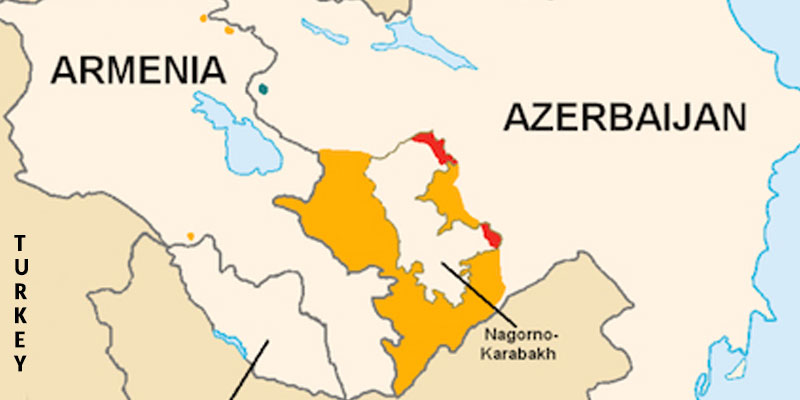- World
- Apr 25
Armenia, Azerbaijan move closer to normalising ties
• Azerbaijani President Ilham Aliyev said a peace deal with Armenia was closer than ever before, as teams from both countries began demarcating the border in a bid to end decades of territorial disputes and clashes.
• On April 23, teams from both countries installed the first border marker after officials had agreed to delimit a section based on Soviet-era maps.
• Last month, Armenian Prime Minister Nikol Pashinyan agreed to return four border villages that were part of Azerbaijan when the two countries were republics of the Soviet Union.
• The four abandoned settlements which are to be returned to Azerbaijan – Lower Askipara, Baghanis Ayrum, Kheirimly and Gizilhajili – were taken over by Armenian forces in the 1990s, forcing their ethnic Azerbaijani residents to flee.
• The settlements are deserted but are strategically important as they are close to Armenia’s main highway north towards the border with Georgia, through which much of its trade is done, and to the pipeline through which it receives gas from Russia.
Dispute over Nagorno-Karabakh
• After the collapse of the Tsarist regime in Russia, Nagorno-Karabakh became a disputed territory between Armenia and Azerbaijan. In 1921, Stalin decided to place the entity, predominantly inhabited by ethnic Armenians, under Baku’s control as a way to divide and rule the South Caucasus.
• This uneasy arrangement lasted until the Soviet Union started to disintegrate in the late 1980s. Serious inter-ethnic clashes erupted in 1988 after the Nagorno-Karabakh Autonomous Oblast voted to join Armenia. Moscow rejected this decision and sent troops to Yerevan to calm the situation but to no avail.
• As the Soviet Union collapsed, Nagorno-Karabakh declared independence in September 1991. Inter-ethnic clashes intensified and, by early 1992, Armenia and Azerbaijan were at war. While there were several attempts to end the fighting, it was Russia that managed to mediate a ceasefire, in May 1994.
• Nagorno-Karabakh lies within Azerbaijan but has been under the control of ethnic Armenian forces backed by the Armenian government since 1994. The region in the Caucasus Mountains of about 4,400 sq km, is 50 km from the Armenian border.
• The conflict over Nagorno-Karabakh has risked dragging in the big regional powers, Russia and Turkey, and destabilising the South Caucasus region, an important corridor for pipelines carrying oil and gas. Moscow has a defence alliance with Armenia, while Ankara backs its ethnic Turkic kin in Azerbaijan.
• Conflict between Armenia and Azerbaijan over the region has persisted for more than three decades.
• During a six-week war in 2020, Azerbaijan took back parts of the region along with surrounding territory that Armenian forces had claimed during the earlier conflict.
• A ceasefire and subsequent Trilateral Statement was agreed in November 2020 following six weeks of fighting, by the leaders of Armenia, Azerbaijan and Russia, leading to the deployment of several thousand Russian peacekeepers.
• In September 2023, Azerbaijani forces launched a lighting blitz that forced Karabakh's Armenian authorities to capitulate in negotiations mediated by Russian forces.
• Earlier this month, Russia began withdrawing its forces from Karabakh, where they have been stationed as peacekeepers under a truce brokered by Moscow that ended the 2020 war.
Manorama Yearbook app is now available on Google Play Store and iOS App Store


